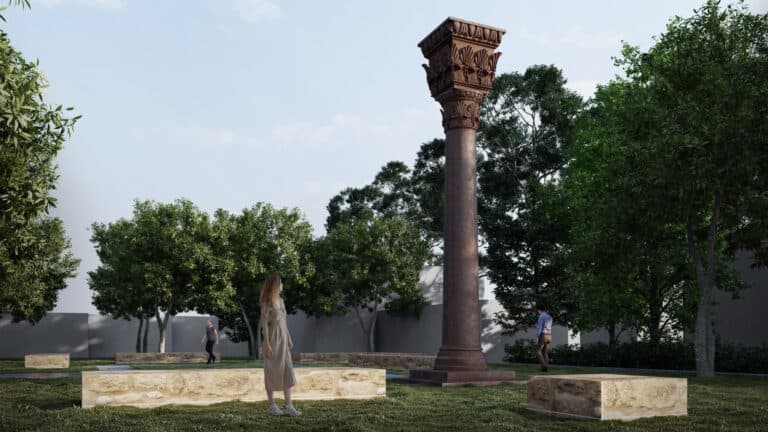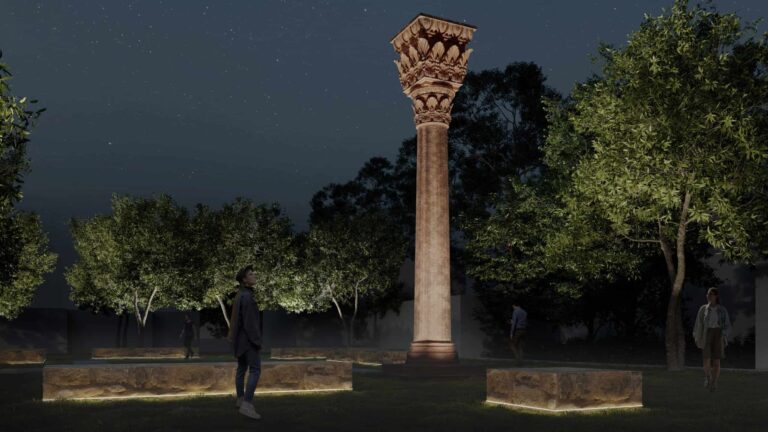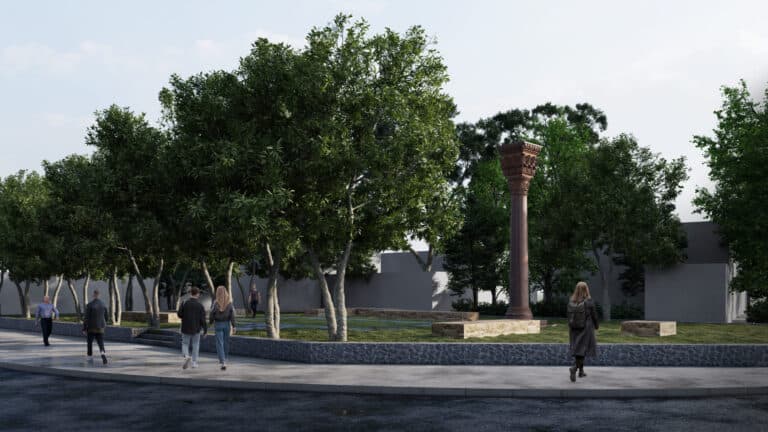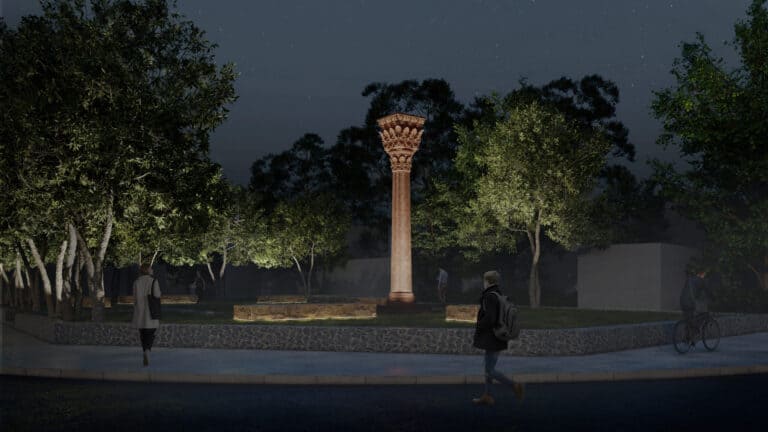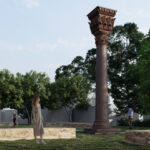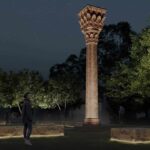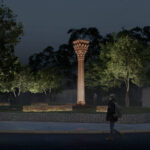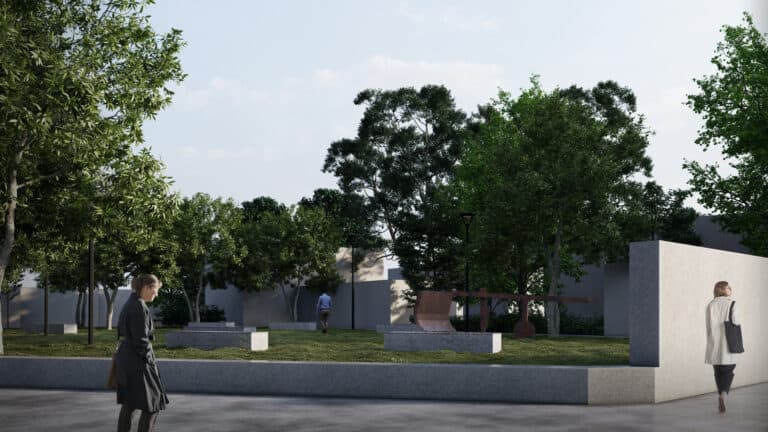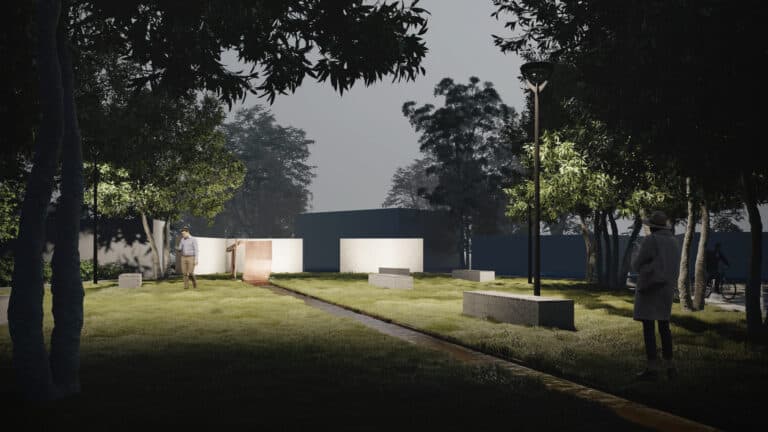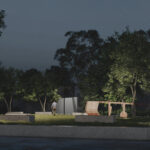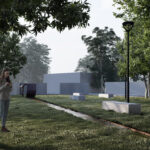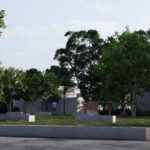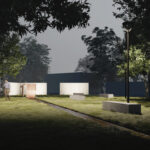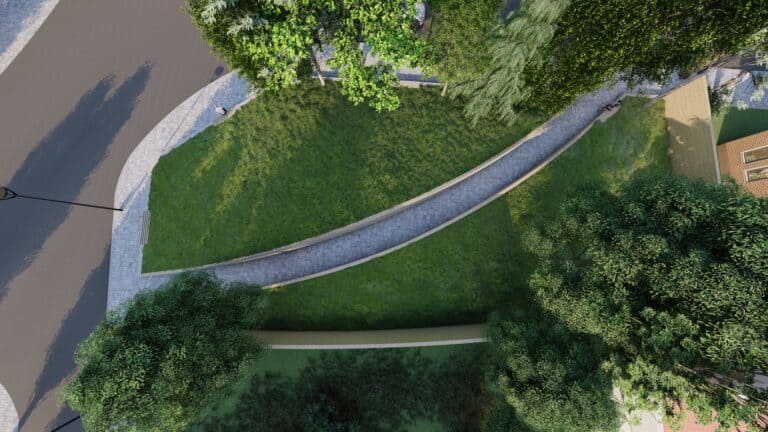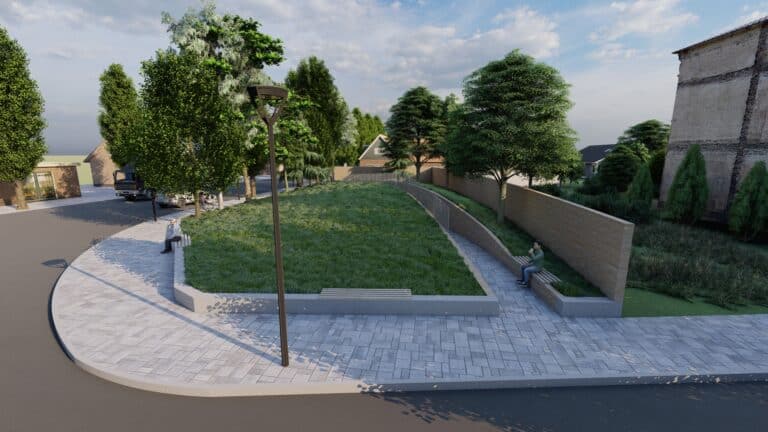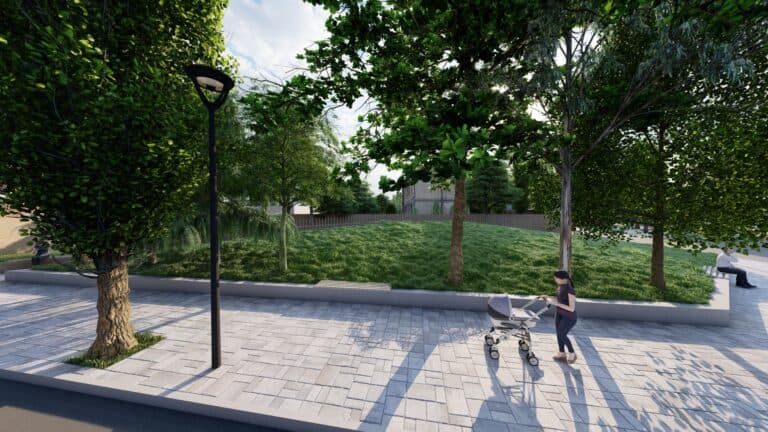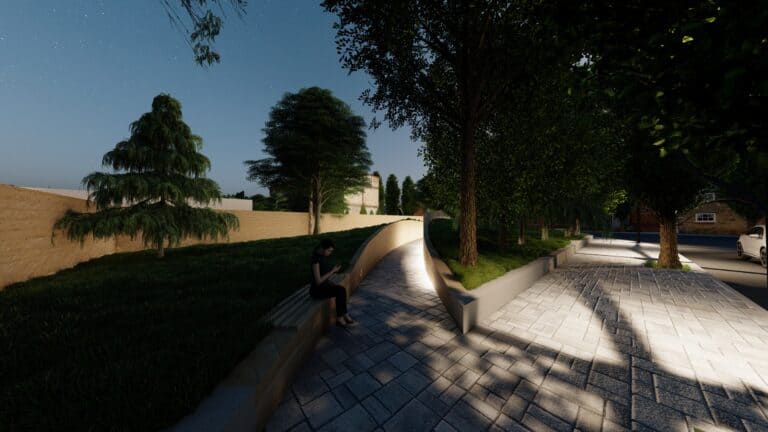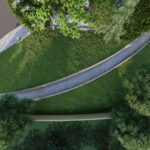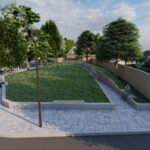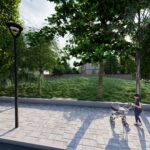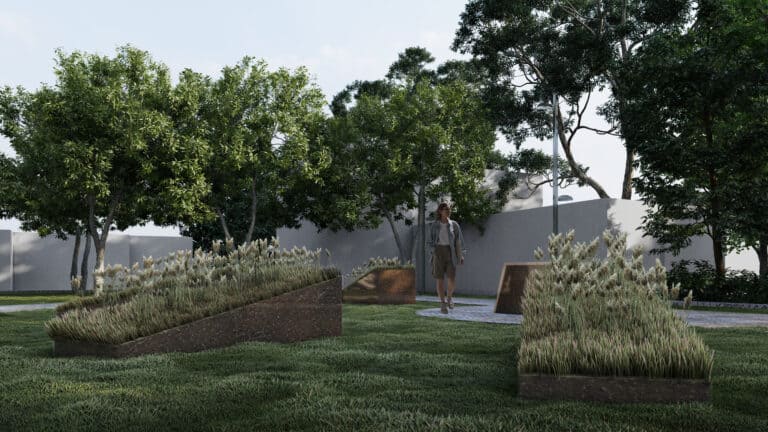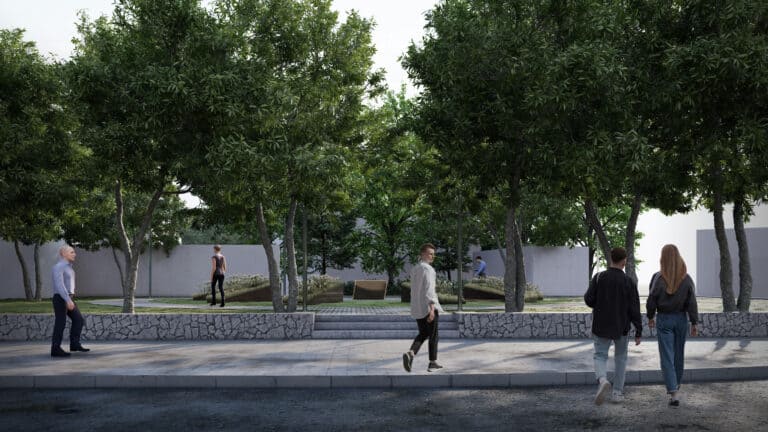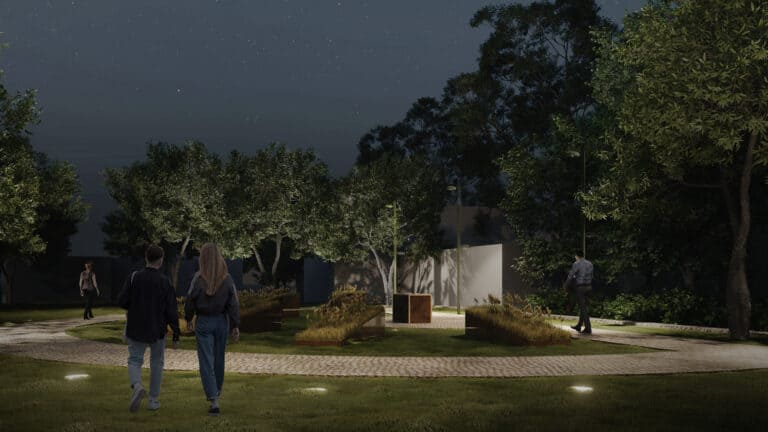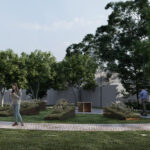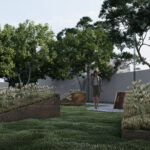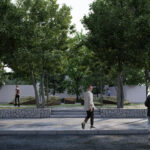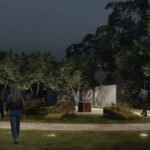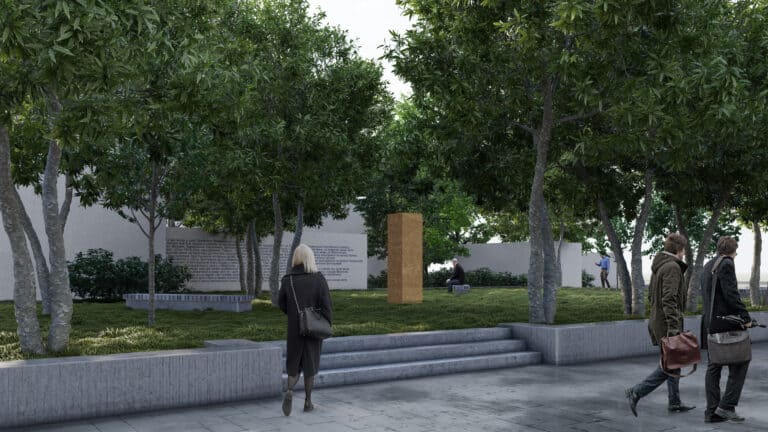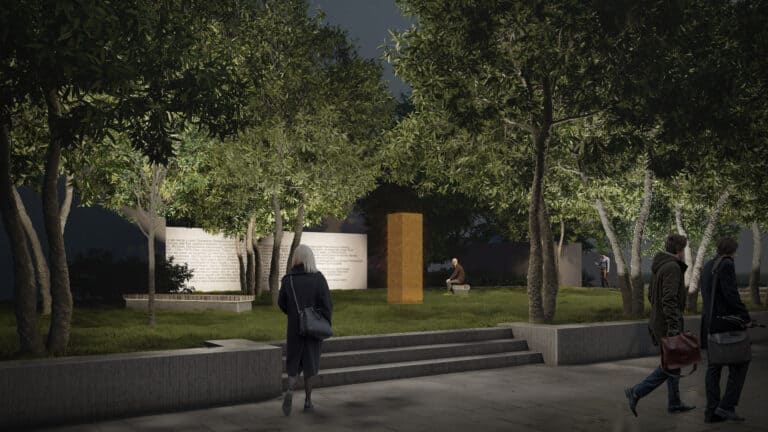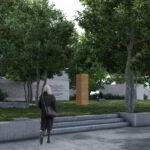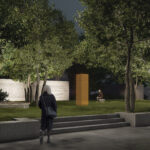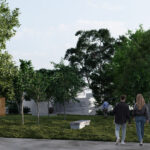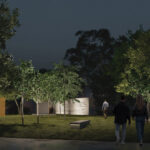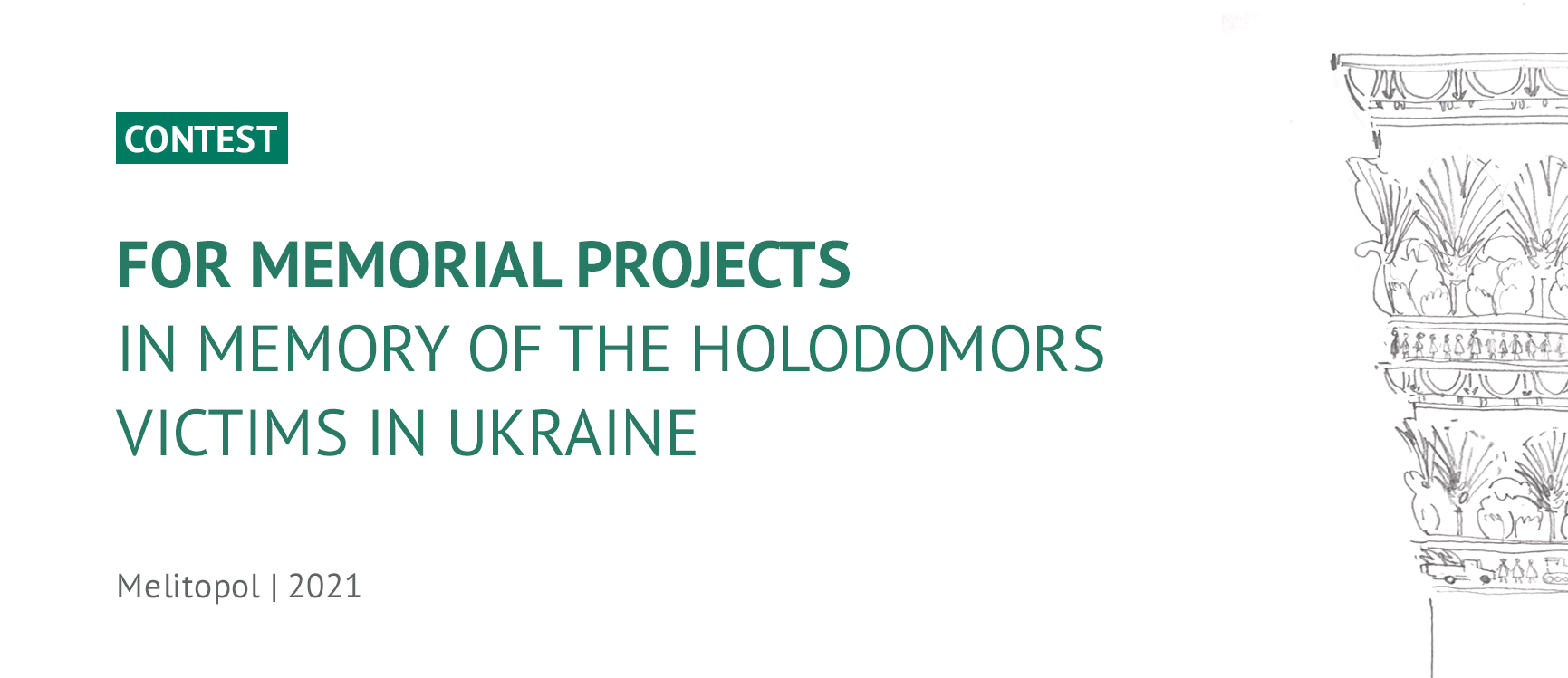

ABOUT COMPETITION
In 2021, representatives of Melitopol, Zaporizhzhia Oblast, expressed their intention to erect a memorial to the Holodomors victims in Ukraine. In order to implement the plan on a professional level, the Foundation for the Preservation of the Historical and Cultural Heritage of Ukraine initiated a closed competition of projects supported by the local authorities. The partner of the competition became the cultural memory platform Past / Future / Art.
Such deep social traumas, the famines of 1921–1923, 1932–1933, and 1946–1947, require relevant approaches. Today, in Ukraine, the search for a language, especially an artistic language, which would allow us to speak of historical tragedies continues. Modern commemorative practices that actively use the means of art help to find appropriate solutions.
To implement the project in Melitopol, the Foundation invited an expert council, which included professionals from the fields of art, commemorative practices and architecture, led by the art critic Lizaveta German. The council members conducted a preliminary study and invited five contenders to take part in the competition. They developed proposals for the memorial with detailed descriptions of the concept, visualizations, technical requirements and implementation plans. The competition granted the artists a pioneering opportunity to conceive projects for such a complex and underdeveloped subject in the field of contemporary art as the Holodomors.
In the fall of 2021, the expert council chose the winner — Daniil Shumikhin. His object The Column has been recommended for the installment in Melitopol. An opening of the memorial was planned for November 2022.
PARTICIPANTS
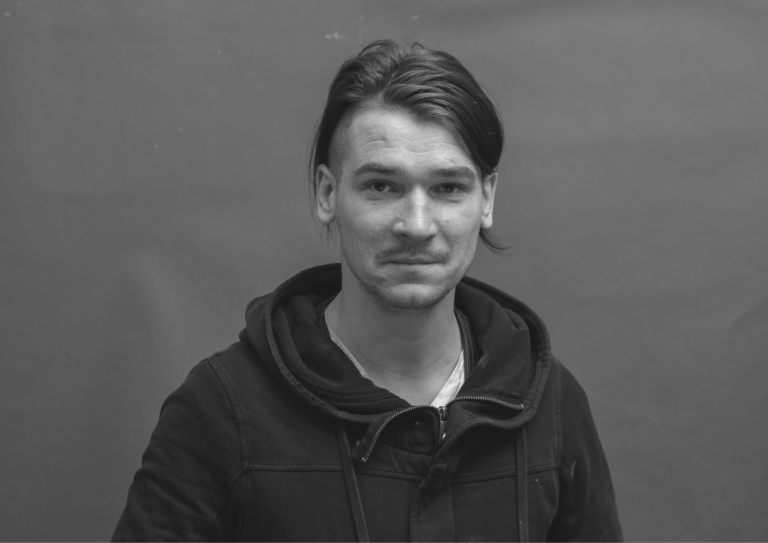
Vitaliy Kokhan
artist who works with the following media: painting, graphics, installation, photography, video, land art
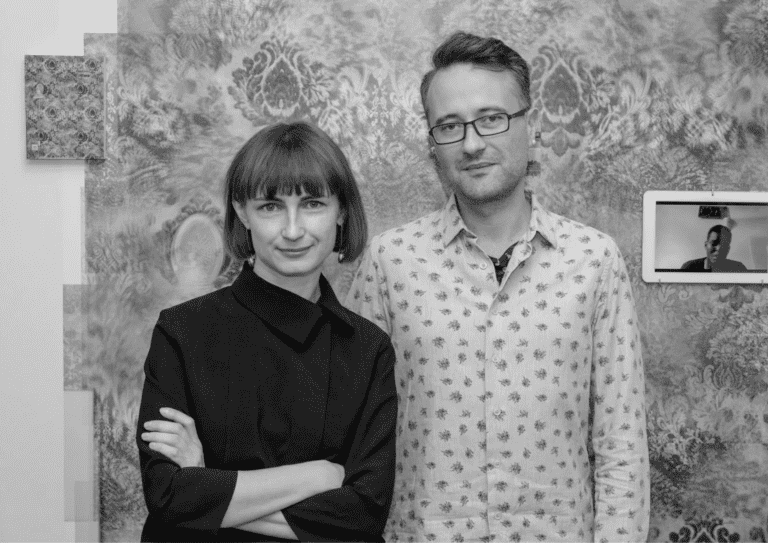
Lia Dostlieva, Andrii Dostliev
artists, researchers. They work with the themes of trauma, postmemory, subjectivity and representation of vulnerable population groups
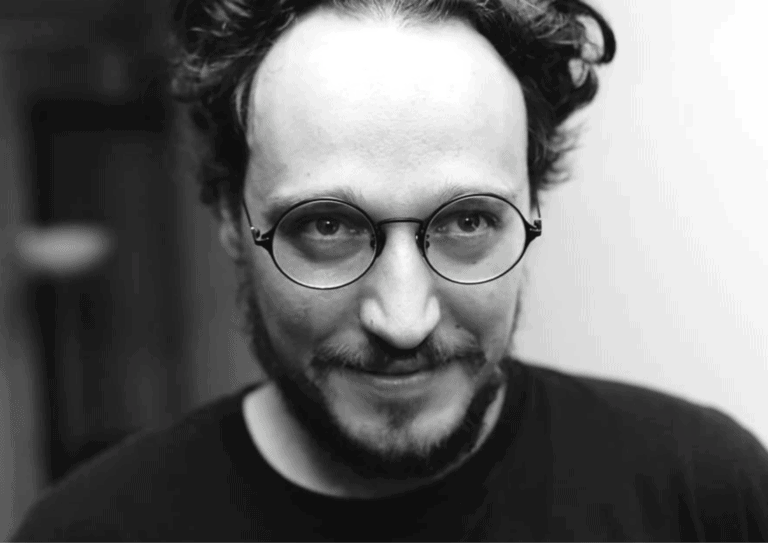
Pavlo Kovach
artist, curator, participant of the Open Group artistic collective. He works with the themes of real and fictional life, stories and characters
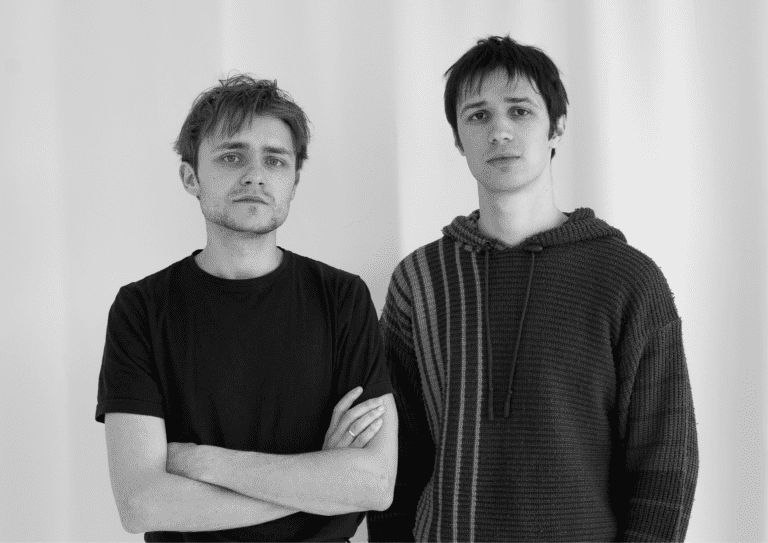
Yarema Malashchuk, Roman Himey
artistic duo who work with different visual arts media as directors, artists, and cinematographers
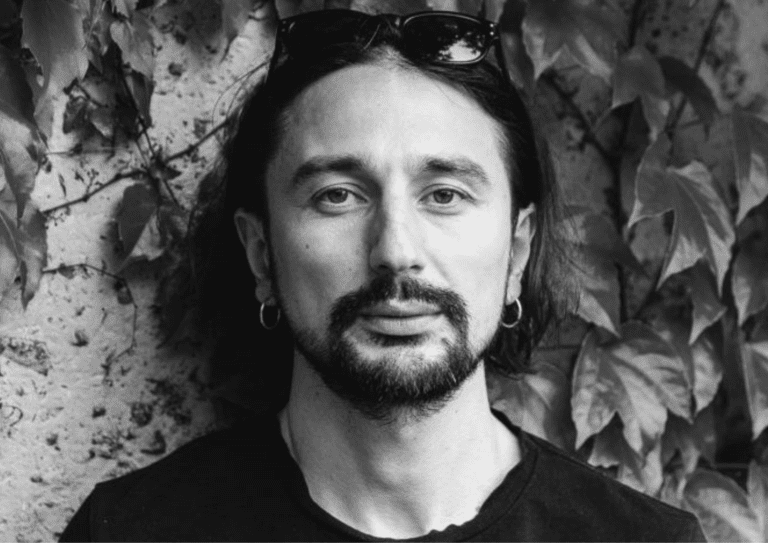
Daniil Shumikhin
artist and sculptor. The primary themes of his creative work are memory, rethinking of history and information
WINNER
Daniil Shumikhin / Working title The Сolumn
Through the centuries, the column has been supporting human constructions and bridging the sky and the earth. Mimicking nature, the human has granted the column various meanings, calling it the Tree of Life, the World Tree, and decorating it with floristic elements.
In Melitopol, one may encounter many columns and their types built in the different times of the city’s existence. Among them, the columns of the Tavria State Agrotechnological University stand out. Their capitals are decorated with ions, petals, and ears of wheat, intimate and intelligible to the Ukrainians symbols of prosperity and fertility.
It is worth noting that the college (gardening technical school) was founded in 1931, just a year before the Holodomor in Ukraine, and, probably, was envisioned to strengthen the southern agricultural sector, improving the numbers of agricultural production.
The column of the Holodomors memorial complex, made from cast iron, revives the motives of the college columns. The material and the natural aging process reveal to the spectator the time flow with its bright and dark sides, creating the dialogue between the past and the present. Long since the solitary columns have been recording historical events. Today, they endure as memory symbols in different places across the globe.
Visualization by ФОРМА
FINALISTS
Vitaliy Kohan / Working Title The Contaminated Fountain
The metaphor of the incurable wound. We are left with the inability to comprehend this manmade tragedy.
Mechanics. The concrete landscape molds an inconspicuous canal, delivering water from the metal “plow.” Metal corrodes by electrochemical action and “contaminates” the stream. The corrosion gravitates to the bottom with the flow of the stream, and the water cleanses.
The plow. The image of the totalitarian state machine, the reference to that times and grain production. In technical terms, the plow is made up of metal and concrete details. The plow and the streamflow directions come up against the concrete walls with the information on the Holodomor in Melitopol and Ukraine.
Visualization by ФОРМА
Pavlo Kovach / Untitled
The Holodomor is a part of my family’s history. My grandmother, according to her account, lived through the Famine in the area of Ural. She survived picking the food leftovers from the cracks in the wooden floor. Unfortunately, it did not save her brothers.
In my creative practice, I had worked with the subject of the Holodomor before; thus, I took part in the development of the Melitopol monument. I attempted to create an alternative to the existing memorials while revising the approach to historical memory.
I have familiarized myself with the testimonies, the excruciating memories running the blockade of our memory (our organism attempts to protect us from the tragic accounts). If we remember everything in detail, we will lose our minds.
The idea originates from the witnesses’ stories about the street loading of dead bodies. If a mother or a father died leaving a small child, the latter was thrown alive on the wagon among the corpses and buried in the mass grave, covered with the earth. The child was moving for several days because of organic processes or the last physical efforts.
Instead of displaying a particular “visual” image, I chose to create a “state,” which differs for every spectator. The architects from the Replus bureau and I considered it crucial to develop peaceful comfort zones (the benches, the lightning, the greenery) where one would like to spend their time — idyll. The one “but” lies in the gradual movement of the well-trimmed and groomed lawn. The spectator does not notice it immediately. Only later on, they detect this inconspicuous, uncanny movement. It is not a conventional “monument,” it is a situation where the spectator is embodied in the memory.
I do not list the instances of the “images” this monument will generate. Here I would like to give a space for the spectator. It implies the same immersion effect as in the works of Oskar and Zofia Hansen. The presence of the passage is a reference to their practices.
The passage through the hill. While walking through it, we will be able to notice the movement of the ground at eye level. As the aperture is shaped like an arc, we cannot see the way out, we have to move on. The mass of the carved “route” became a barrier between the private and the public spaces — the area of the monument. Symbolically, we distance ourselves from the living to “listen” to the dead. On the other hand, it is the so-called shortcut, or the “desire path.” We can often see paths between the paved routes. When a person is in a hurry, they shorten the way and become a part of the monument running into it.
The static part of the monument will be made in the technique of rammed earth (compressed earth with concrete). The wall production technology requires ramming earth mixed with a small amount of concrete layer by layer into the formwork. Something similar occurs during the natural process when everything transforms into a chornozem. To my mind, in symbolical and visual terms, this technology suits the subject. The ground will be lifted with the large tires, inflated and deflated by the compressor under the thickness of the soil.
The artist — Pavlo Kovach
The architects — Replus bureau
Animation — Ivan Oleksiak
Lia Dostlieva and Andrii Dostliev / Untitled
The concept of our proposal for the Memorial to the victims of the Holodomor in Melitopol, Ukraine is based on four key points:
Performative nature of memory. Although tragic events of the Holodomor belong to the past, remembering them is a live process, which is happening here and now. Trauma connected to those events is still present in everyday practices and perception of reality. To highlight the performative nature of memory we are proposing the local community a ritual that enacts the process of collective commemoration: sowing and harvesting wheat together. At the same time, the memorial space is open for other commemorative practices.
Continuity of commemorative tradition. During the last 30 years in Ukraine a recognizable commemorative language was formed and therefore, to preserve this continuity, we have included into our project one of the most recognizable Holodomor symbols — ears of wheat. This symbol was re-contextualised and adapted to contemporary commemorative practices. Green growing wheat symbolizes the fact that even despite the tragic losses Ukrainians had survived and life goes on.
Inclusive symbol of tragedy that does not concentrate on purely rural symbols. Traditionally, memorials to the Holodomor victims use rural and/or religious symbols that exclude other social groups and make it harder for them to identify with the Holodomor tragedy as a part of common memory. However, tables are a universal symbol, they can be found in every home, regardless of geographic location, religious beliefs, and ethnicity. A table that is based in the center of the memorial is deformed in a way which makes it not functional anymore, which is a reference to the traumatic past.
“Never again”. Wheat and fruit trees that grow in the park around the memorial create a symbolic presence of an additional food source in the city space as a reminder that such tragedies should never repeat. Green plants create a welcoming and friendly space for the visitors in the tradition of contemporary urban gardens.
Visualization by ФОРМА
Yarema Malashchuk and Roman Himey / Untitled
In the exposition of the Melitopol Museum of Local Lore, among other things, there is an inconspicuous photo from 1933. It is a family portrait of the Kyrychenkos, taken at a local photo studio on the way to a cemetery. The youngest, 4-year-old Mykolka, lies in a coffin in front. As a testimony to the son’s death, this photo was taken for the father, who at that time served a manual-labor sentence on the White Sea-Baltic Canal.
We envision the future square park in memory of the Holodomors victims as a green recreational site without the typical structure usually employed for the squares in Ukraine. The space is covered with a net through which grass and other plants grow.
Benches are placed chaotically over the site. In a transparent yellow monolith, a small photo of the Kyrychenkos stands in one of the park corners and seems to be levitating there. The experience of the family and its manifestation through photography become an indisputable testimony to the Holodomor, accessible to the public. The picture is both a document and a symbol.However, the site remains in the present and does not force visitors to delve into the past involuntarily. The space scenario does not accentuate the object with the photo but balances it with the trees, the benches for rest, and the visitors themselves.
Visualization by ФОРМА
EXPERT JURY
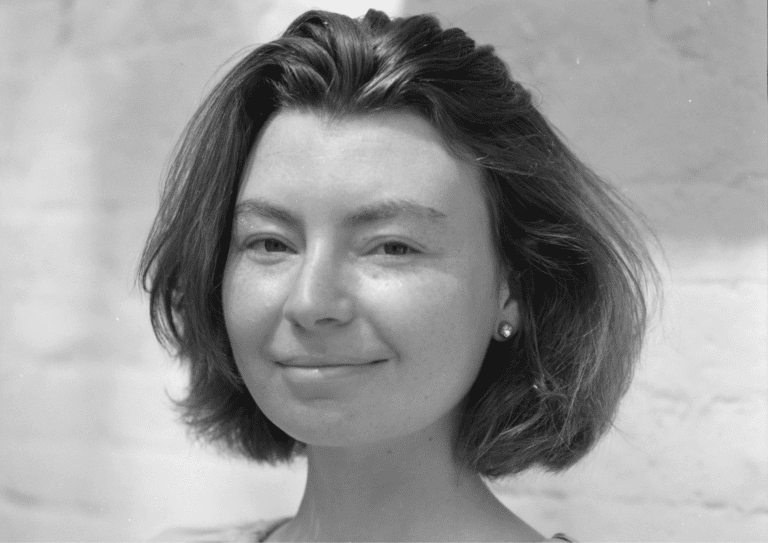
Lizaveta German
curator, co-founder of The Naked Room Gallery
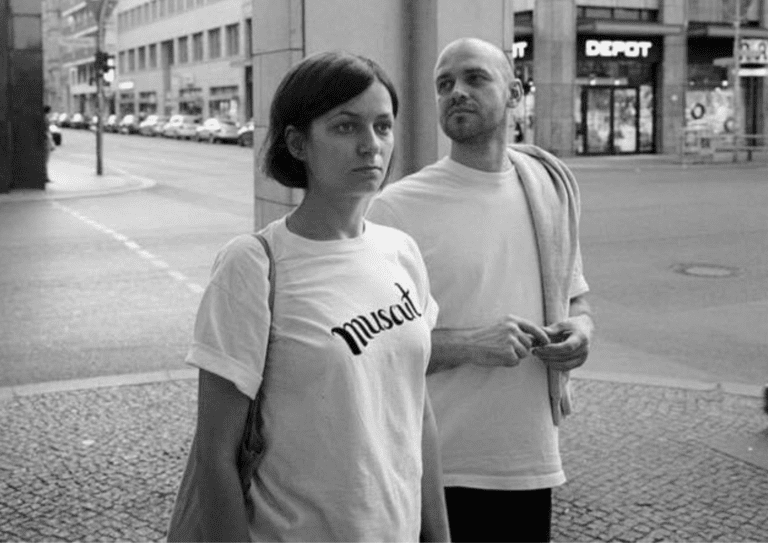
Iryna Miroshnykova Oleksii Petrov
founders of the architectural bureau ФОРМА
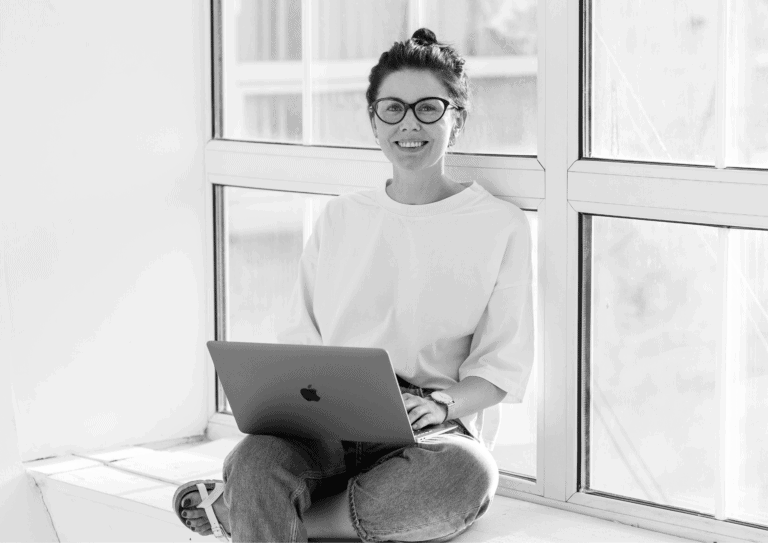
Kateryna Semenyuk
cultural manager, curator of the cultural memory platform Past / Future / Art
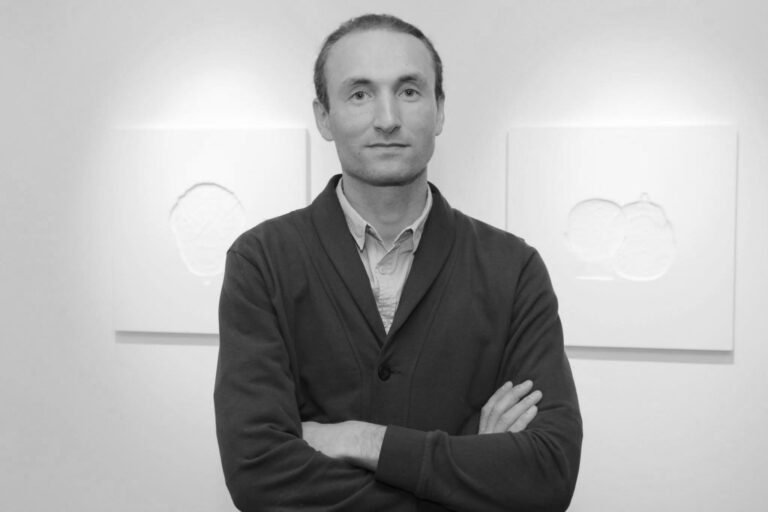
Nazar Bilyk
sculptor
STAGES OF THE COMPETITION
June-July 2021
Development of the structure of the competition, formation of the list of participants
Research trip of artists and jury to Melitopol, research of the region’s history and work with the Melitopol Local History Museum team
Workshop for participants and experts on commemorative practices of Holodomors and famine in Ukraine and other countries, moderated by Oksana Dovgopolova, curator of the Past / Future / Art project
July–September 2021
Participants’ work on project proposals
October–November 2021
Expert jury work on participants’ proposals, choice of the winning proposal, finalization of the winner’s project
November 2021
Public presentation and discussion of all proposals and presentation of the final project
ABOUT THE ORGANIZER
Foundation for Preservation of the Historical and Cultural Heritage of Ukraine is a charitable organization that works to develop and preserve historical and cultural heritage in the city of Melitopol and beyond. The founders of the foundation are Serhii Minko and Volodymyr Spielvogel. In the summer of 2020 they initiated thecreation of a memorial in the historical part of Melitopol dedicated to the memory of the Holocaust victims and the building of a sculpture by the famous Ukrainian artist Oleksandr Diachenko.
PARTNER OF THE COMPETITION
Past / Future / Art is a cultural memory platform which implements educational and research projects, as well as a public program of activities in order to involve the general public into working through the past.
MEDIA PARTNER
LB.ua (Livyi Bereh) is an independent online outlet focused on politics and society founded in 2009.
